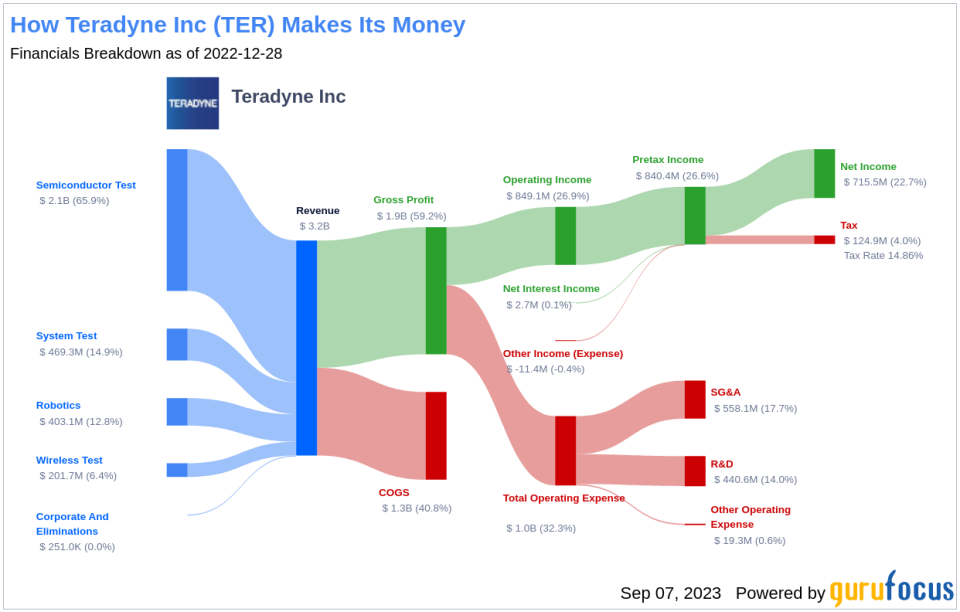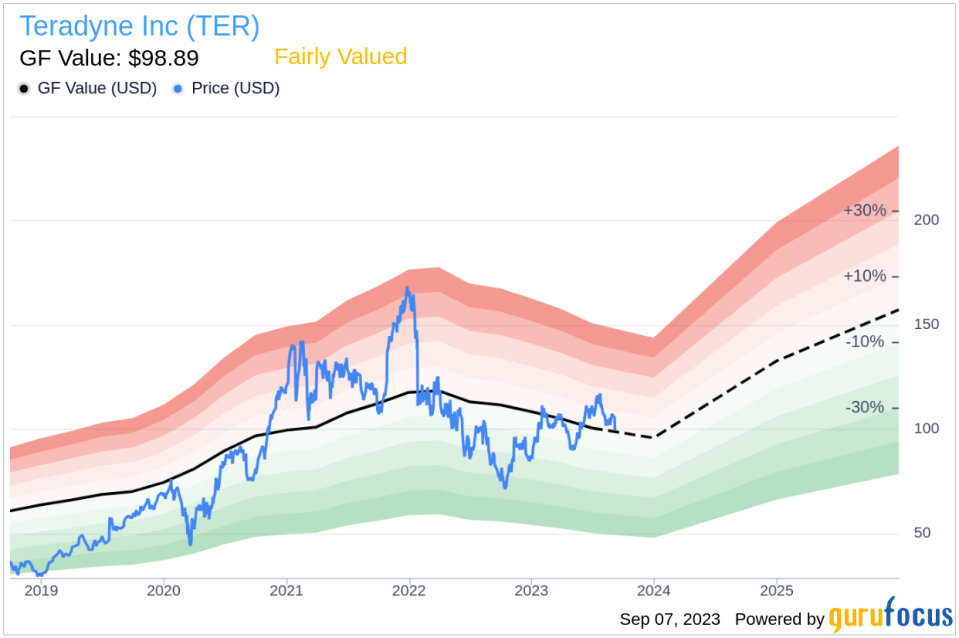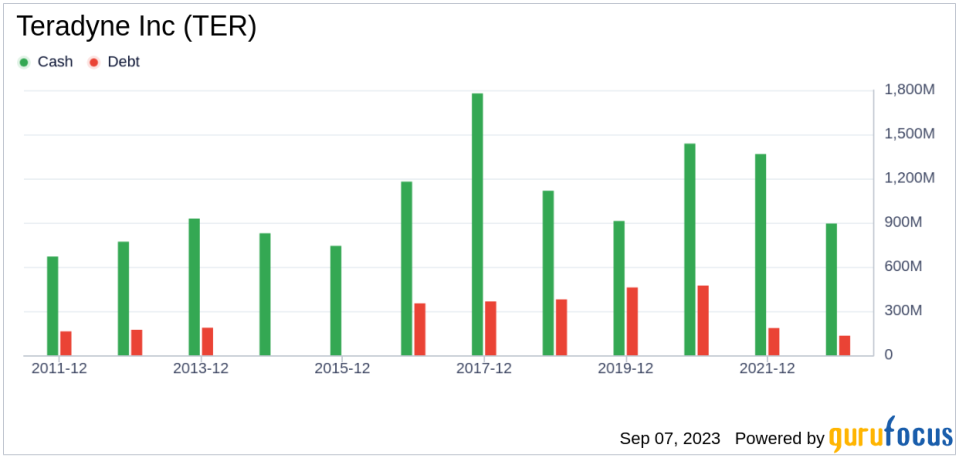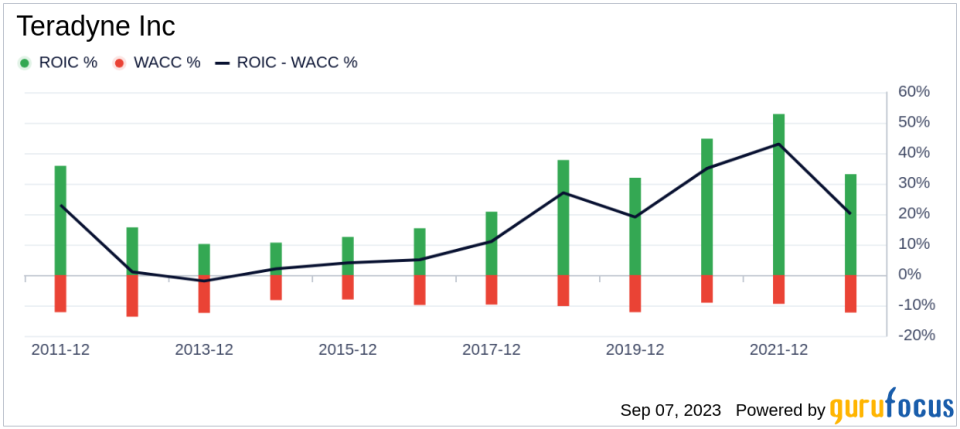Teradyne (TER): A Comprehensive Analysis of Its Market Value
Teradyne Inc (NASDAQ:TER), a leading provider of testing equipment for semiconductors, electronics systems, and hard disk drives, experienced a daily loss of -5.58%. Over the past three months, the company has seen a loss of -4.23%. Despite these losses, its Earnings Per Share (EPS) stands at 3.37. This raises the question: Is the stock fairly valued? In this article, we will delve into an in-depth valuation analysis of Teradyne (NASDAQ:TER).
Company Overview
Teradyne entered the industrial automation market in 2015, selling collaborative and autonomous robots for factory applications. The company's most significant exposure is to semiconductor testing, serving vertically integrated, fabless, and foundry chipmakers with its equipment. The stock price of Teradyne currently stands at $99.69, while its GF Value is $98.89, indicating that the stock is fairly valued.
Understanding GF Value
The GF Value is a proprietary measure that represents the current intrinsic value of a stock. It is calculated based on three factors: historical multiples (PE Ratio, PS Ratio, PB Ratio and Price-to-Free-Cash-Flow) that the stock has traded at, a GuruFocus adjustment factor based on the company's past returns and growth, and future estimates of the business performance. The GF Value Line on our summary page gives an overview of the fair value that the stock should be traded at.
Based on GuruFocus' valuation method, the stock of Teradyne appears to be fairly valued. The GF Value estimates the stock's fair value based on three key factors: historical multiples, an internal adjustment based on the company's past business growth, and analyst estimates of future business performance. If the share price is significantly above the GF Value Line, the stock may be overvalued and have poor future returns. On the other hand, if the share price is significantly below the GF Value calculation, the stock may be undervalued and have higher future returns. Since Teradyne is fairly valued, the long-term return of its stock is likely to be close to the rate of its business growth.
Link: These companies may deliever higher future returns at reduced risk.
Financial Strength
Companies with poor financial strength offer investors a high risk of permanent capital loss. To avoid this, an investor must do their research and review a company's financial strength before deciding to purchase shares. Both the cash-to-debt ratio and interest coverage of a company are a great way to to understand its financial strength. Teradyne has a cash-to-debt ratio of 6, which ranks better than 65.7% of 895 companies in the Semiconductors industry. The overall financial strength of Teradyne is 9 out of 10, indicating that the financial strength of Teradyne is strong.
Profitability and Growth
Investing in profitable companies carries less risk, especially in companies that have demonstrated consistent profitability over the long term. Typically, a company with high profit margins offers better performance potential than a company with low profit margins. Teradyne has been profitable 9 years over the past 10 years. During the past 12 months, the company had revenues of $2.90 Bil and Earnings Per Share (EPS) of $3.37. Its operating margin of 22.32% is better than 85.07% of 938 companies in the Semiconductors industry. Overall, GuruFocus ranks Teradyne's profitability as strong.
Growth is probably the most important factor in the valuation of a company. GuruFocus research has found that growth is closely correlated with the long term stock performance of a company. A faster growing company creates more value for shareholders, especially if the growth is profitable. The 3-year average annual revenue growth of Teradyne is 13.3%, which ranks better than 53.19% of 863 companies in the Semiconductors industry. The 3-year average EBITDA growth rate is 14.7%, which ranks worse than 59.66% of 766 companies in the Semiconductors industry.
ROIC Vs WACC
Another way to look at the profitability of a company is to compare its return on invested capital and the weighted cost of capital. Return on invested capital (ROIC) measures how well a company generates cash flow relative to the capital it has invested in its business. The weighted average cost of capital (WACC) is the rate that a company is expected to pay on average to all its security holders to finance its assets. We want to have the return on invested capital higher than the weighted cost of capital. For the past 12 months, Teradyne's return on invested capital is 23.58, and its cost of capital is 14.55.
Conclusion
Overall, Teradyne (NASDAQ:TER) stock appears to be fairly valued. The company's financial condition is strong and its profitability is strong. Its growth ranks worse than 59.66% of 766 companies in the Semiconductors industry. To learn more about Teradyne stock, you can check out its 30-Year Financials here.
To find out the high quality companies that may deliever above average returns, please check out GuruFocus High Quality Low Capex Screener.
This article first appeared on GuruFocus.




